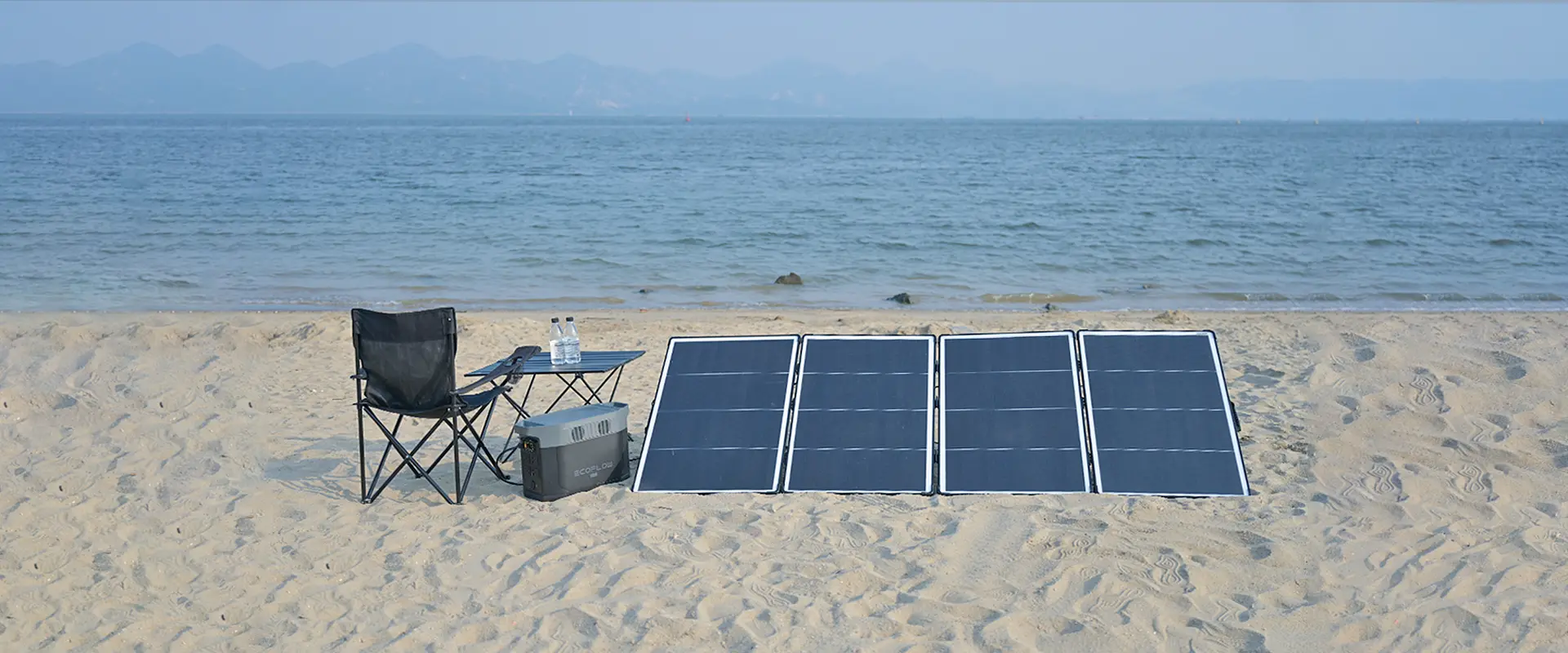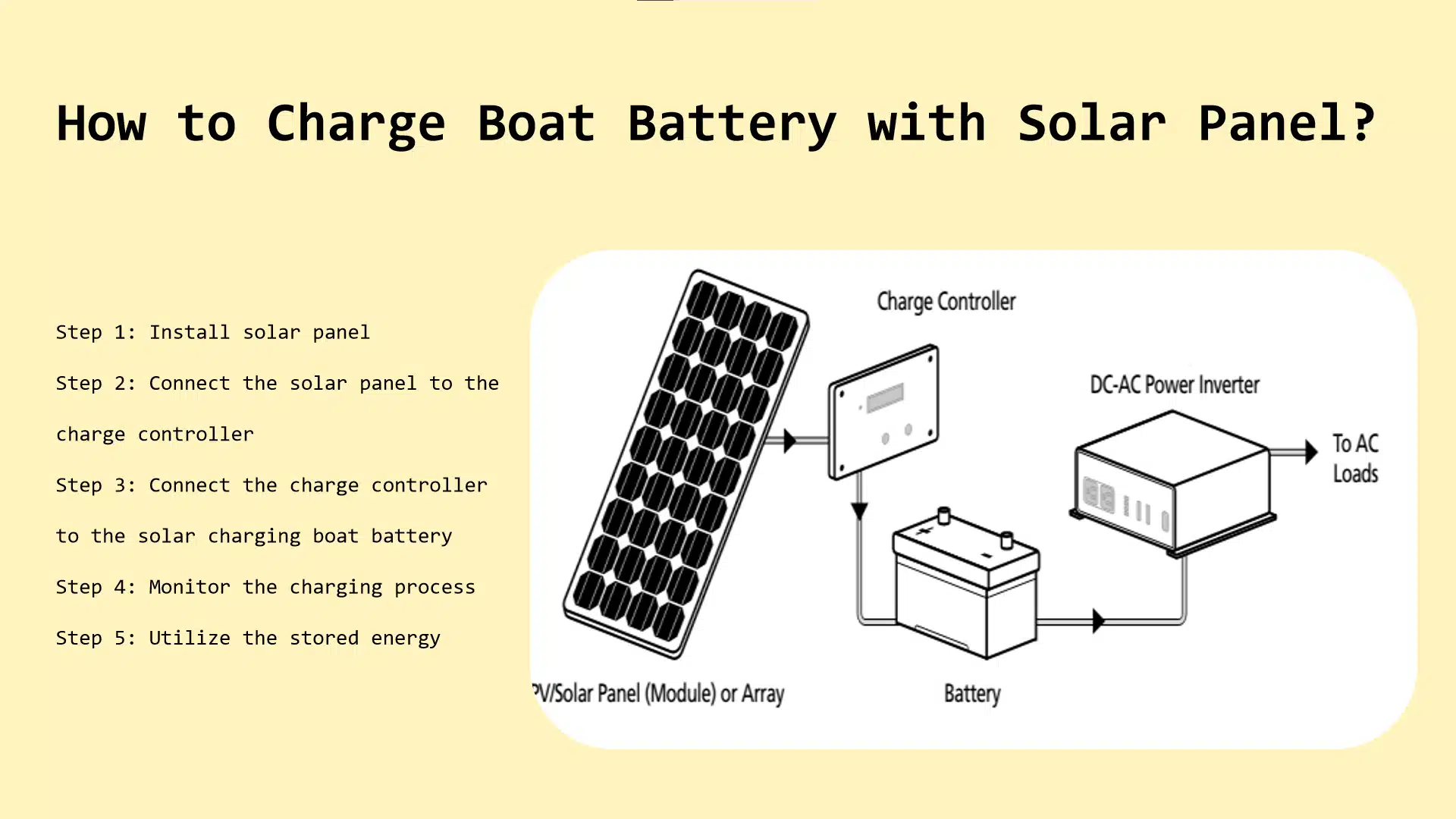Solar battery chargers for boat offer a time-saving solution for water enthusiasts and operators who enjoy adventures on the water and fishing. Bioluminescence Florida season is just around the corner, so before you head out to enjoy the spectacle, learn about solar battery chargers and choose a reliable power source for your kayak. Choose a reliable power source for your kayak.
This guide will provide you with comprehensive information on how to choose the best solar battery charger for your boat. We will explore the feasibility of solar charging boat batteries, walk you through the process of determining the right size solar boat battery charger, and provide valuable information to help you choose the best solar battery charger for your boat that suits your needs. At the same time, we will also provide in-depth information on the different types of chargers to help you make an informed choice.

How to Charge Boat Battery with Solar Panel?
Solar panels can charge boat appliances. Solar panels utilize solar cells to absorb sunlight and convert light energy into electricity. If the solar panels are connected to an existing system or portable power station, the energy collected will be converted into usable electricity and stored by the portable power station to run appliances on the boat, use on camping trips, or even provide power during a blackout.

After understanding how solar battery chargers work, officially putting them into use also requires the concerted efforts of some solar-related components, How to install solar panels to charge batteries on a boat:
- Step 1: Install solar panel: Install the solar panel on the boat to ensure it can fully absorb sunlight.
- Step 2: Connect the solar panel to the charge controller: Use suitable wires and connectors to connect the solar panel to the charge controller to realize the control of energy flow.
- Step 3: Connect the charge controller to the solar charging boat battery: to store the collected energy in the battery for later use.
- Step 4: Monitor the charging process: Monitor the charging process by looking at the indicator lights or display on the charge controller to make sure everything is working properly.
- Step 5: Utilize the stored energy: Once the marine battery is fully charged, use the stored energy to power your boat’s appliances.
Types of Marine Solar Panels
Rigid Solar Panels
Rigid solar panels for boats are usually made of monocrystalline silicon cells, known for their excellent efficiency and performance. These solar panels are preferred by boat owners for their high power output, space-saving design, and long service life. However, fixed installations and weight issues are gradually being replaced by lighter, flexible solar panels.
Flexible Solar Panels
Flexible solar panels are similar to thin film panels and offer a lightweight, adaptable solution for marine installations. Flexible solar panels to charge boat batteries often utilize amorphous silicon cells that can be bent and adapted to the curved surface of the boat. While flexible panels are not as efficient as rigid monocrystalline panels, they offer more mounting options and are ideal for irregular surfaces.
Portable Solar Charger
Portable solar chargers for boat batteries are the preferred choice of boat owners looking for a convenient, on-the-go power solution. Designed to be compact and lightweight, these chargers feature collapsible panels and built-in batteries for easy transportation and storage. the Sungold HP-S 200W is a good example of a charger that provides fast and efficient charging of small electronic devices and boat batteries while docked or at anchor. While portable chargers may not provide the same power output as rigid or flexible panels, they offer unmatched portability and convenience for boating adventures.

What Size Solar Charger for Boat Battery?
When selecting the ideal solar panel size for marine battery charging, several crucial factors must be taken into consideration.
- size of the boat
- capacity of the battery
- required power output
- available sunlight
For most boats, a single 100-watt solar panel is generally sufficient for maintaining a marine battery charge over a short period. However, for larger boats or those with higher power demands, the size of the solar panel must be taken into consideration. For most boats, a single 100-watt solar panel is generally sufficient for maintaining a marine battery charge over a short period. However, for larger boats or those with higher power demands, it may be necessary to install multiple panels or larger panels (a 200w solar panel will be better).
In addition to power needs, one should consider the prevailing weather conditions while sailing. If sailing in cloudy and overcast conditions, a larger solar panel may be necessary to compensate for the lack of power. If sailing in cloudy and overcast conditions, a larger solar panel may be necessary to compensate for the reduced amount of sunlight. Conversely, if sailing in sunny conditions, a smaller panel may suffice.
The quality and efficiency of the solar panel are also vital considerations. Higher-quality panels tend to have a higher efficiency rating, meaning they Higher-quality panels tend to have a higher efficiency rating, meaning they can generate more power with fewer panels. The Sungold HP-S 200w solar panel is powered by Sunpower cells with a conversion efficiency of up to 24.40% and a stable output. The folding design doesn’t take up too much space on the boat, and the portable design not only allows you to charge the battery on the boat but also to take it with you for fishing and camping.
The Pros and Cons of Solar Battery Charger for Boat
Pros
- High power generation from solar panels, no shadows on the sea surface, and better lighting conditions.
- Clean energy, no noise, and no pollution during use.
- More suitable for long-term off-grid use, reducing dependence on fossil fuels.
- Lightweight and easy to install, can be mounted on the deck or canopy of the boat.
Cons
- With high initial investment cost, portable solar panels are slightly more expensive
- Depending on weather, power generation will be affected by cloudy and rainy days
FAQs
| Do solar chargers work for boat batteries? |
| Yes, solar chargers can effectively charge boat batteries. They harness sunlight to generate electricity, which can then be used to charge the battery. However, the effectiveness of solar chargers may vary depending on factors such as the size of the solar panel, sunlight availability, and the battery’s capacity. |
| How much solar does it take to charge a marine battery? |
| The amount of solar power required to charge a marine battery depends on several factors, including the battery’s capacity, the efficiency of the solar panel, and environmental conditions such as sunlight intensity and duration. Typically, a solar panel with a power output ranging from 10 to 20 watts per hour may be sufficient to charge a marine battery over a reasonable period. |
| What size solar panel do I need to charge a 12v battery? |
| The size of the solar panel needed to charge a 12-volt battery depends on factors such as the battery’s capacity and the desired charging rate. As a general guideline, a 100-watt solar panel is often recommended for charging a single 12-volt battery efficiently. However, for larger batteries or faster charging rates, larger solar panels may be required. |
| What size battery charger do I need for my boat? |
| The size of the battery charger needed for a boat depends on the battery’s capacity and the desired charging time. It’s essential to match the charger’s output capacity with the battery’s requirements to ensure efficient charging without overloading or damaging the battery. Consult the battery manufacturer’s specifications or seek advice from a marine equipment expert to determine the appropriate charger size for your boat’s battery system. |











